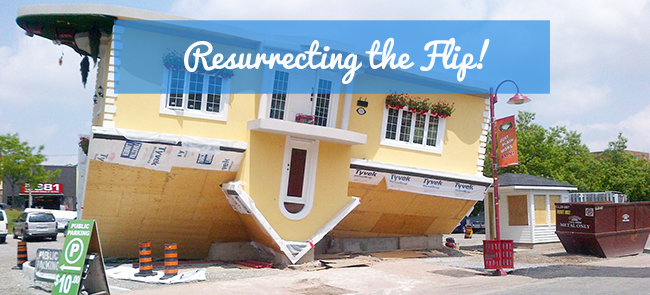Flipping properties has slowed down as it took its hits during the recession, but unlike the Twinkie, it’s still around. Helped by an increase in property values over this past year, flipping property has been somewhat resurrected!
The fact that there is really no indication that foreclosure activity (or short sale transactions) will be slowing down in the near future, coupled with all-time low interest rates, is major reason why flipping is poised to make a comeback. What we on the front lines are seeing is that buyers are willing to pay a higher price for a turnkey home (due to the low interest rates) and investors are more likely to find a deal because of the REO and short sale presence in the Southern California market.
While this sounds like a great opportunity to get in on the action please be cautious! Flipping property may seem like an easy way for one to make a quick buck (as they make it seem on T.V. shows) but it really can be quite an involved process. Allow me to explain, for a property to be profitable you must purchase it at least 30% under market value. The reason behind this is that you will need to invest money into fixing it up, you will have the cost of the time you are working on the property going against you, and when you sell it there will be closing costs involved.
Think about it like this: If you buy a property that is worth $300k for $250k, and put $50k into the property to make it worth $350k, right off the bat looking at a profit of $50k. Great right? Well not if you consider the fact that you will have to pay the closing costs that are involved with reselling the property after completing construction (roughly 11% on average). That’s an extra $38.5k you have to subtract from your profit. So now you are only looking at a profit of $11.5k. Let’s say the construction and reselling took 60 days to complete, is your time only worth $5250 per month before taxes? Or even worse if you borrowed the money for the purchase or the construction you will have to pay interest on it. And this is if everything goes smoothly! What happens if it rains off and on for two weeks, and now it’s taking 90 days to complete the transaction? Or what if you find that the foundation has a major crack in it? There are a lot of ways that you can quickly be on the losing side of this equation (hence the 30% under FMV rule).
Moreover, it’s not every day that deals like this come up in your neighborhood; and if you do find a deal, you will also find yourself in competition against investors who have years of experience that will pounce on you at the first sight of blood. Most of investors currently are submitting all cash offers which make it very hard for someone who is inexperienced and using financing to get an offer accepted at a discounted price.
Tips on looking for a potential flip:
– Know the market – do your homework,
– Run comparables & study the most recent market trends in the specifics areas you are looking to flip.
– Try to negotiate a deal with title, escrow, and the listing agent for a discounted fee is you use them when you resell the property.
– Try to establish a relationship with a lender and contractor, to cut the other costs involved.
– Stay away from properties with unpermitted additions
Know your limits, and look for red flags; properties with structural damage, foundation issues, or the need to knock down walls can be a big challenge if you don’t have a lot of experience in flipping and the time constraints involved.
For the heavy hitters, luxury home flips are becoming more common as they provide for greater returns. Upscale areas in Los Angeles showed in a recent report that on average a flip of this nature can generate 20% or more return on investment. However these take mucho moola to make happen. If you are looking to invest several hundred thousand dollars into these multimillion dollar homes, than you are playing at the high risk – high rewards table; but again be careful!
Even though we are seeing a surge in flipping, and home prices have stopped dropping for the moment, ask yourself how sustainable is this turnaround? What if interest rates start climbing back up, and we come across a big surge of foreclosures due to modifications that are now adjusting from a few years back? Will the lack of demand caused by the increase in interest rates, and the increase in supply due to increased foreclosure activity, kill the rebound we are seeing? Will flipping prevail or become yesterday’s fad?… Hey does anyone have a twinkie?
Contributor, designer & admin for JohnHart Gazette.


